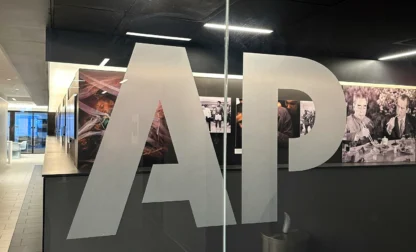SEATTLE (AP) — The FBI confirmed Tuesday it faked an Associated Press story to catch a bomb threat suspect in 2007, but now says it did not spoof a Seattle Times Web page as part of the investigation.
Police in Lacey, near Olympia, sought the FBI’s help as repeated bomb threats prompted a week of evacuations at Timberline High School in June 2007.
After police interviews of potential suspects came up empty, the agency obtained a warrant from a federal magistrate judge to send a “communication” to a social media account associated with the bomb threats, with the idea of tricking the suspect into revealing his location, according to documents obtained by the San Francisco-based Electronic Frontier Foundation.
The “communication,” which contained a software tool that could verify Internet addresses, turned out to be a link to a phony AP story about the bomb threats posted on a Web page created by the FBI. The 15-year-old suspect clicked on the link, revealing his computer’s location and Internet address, and helping agents confirm his identity.
The documents suggested the bogus story was posted on a fake Seattle Times site, but Seattle FBI spokeswoman Ayn Dietrich said Tuesday that was wrong. Instead, she said an undercover agent sent the teen a hyperlink that simply said “article,” and nowhere was The Seattle Times referenced.
The confusion stemmed from an email between FBI employees that referred to an “email link in the style of The Seattle Times,” but that link was simply provided as an example of what a news story link might look like, Dietrich said.
The FBI did not initially respond to AP’s request earlier Tuesday for further detail about the fake story, beyond saying the ruse was necessary as part of the investigation.
“Every effort we made in this investigation had the goal of preventing a tragic event like what happened at Marysville and Seattle Pacific University,” said Frank Montoya Jr., the FBI’s special agent in charge in Seattle, referring to two local school shootings this year. “We identified a specific subject of an investigation and used a technique that we deemed would be effective in preventing a possible act of violence in a school setting. Use of that type of technique happens in very rare circumstances and only when there is sufficient reason to believe it could be successful in resolving a threat.”
AP spokesman Paul Colford said Tuesday the FBI’s “ploy violated AP’s name and undermined AP’s credibility.”
“We are extremely concerned and find it unacceptable that the FBI misappropriated the name of The Associated Press and published a false story attributed to AP,” Colford said in a statement.
Kathy Best, editor of The Seattle Times, said in a statement that while the newspaper was “pleased to hear” the FBI did not use the paper’s name, it would have preferred to have found that information out earlier from the agency “instead of a defense of the tactic” Monday after the FBI was presented with internal agency documents showing a mocked up, phony Seattle Times email and Web page.
“Even if The Seattle Times name wasn’t used, the issues raised are the same. The FBI, in placing the name of The Associated Press on a phony story sent to a criminal suspect, crossed a line and undermined the credibility of journalists everywhere — including at The Times,” Best said.
Dietrich said she had no information about how often the FBI has faked news stories during investigations beyond Montoya’s description that it was “very rare.”
“In order to safeguard the FBI’s ability to effectively detect, disrupt, and dismantle threats to the public, we must be judicious in how we discuss investigative techniques,” Dietrich said in an email.
The documents revealing the deception were publicized Monday on Twitter by Christopher Soghoian, the principal technologist for the American Civil Liberties Union.
___
Follow Johnson at https://twitter.com/GeneAPseattle


